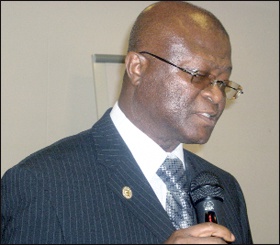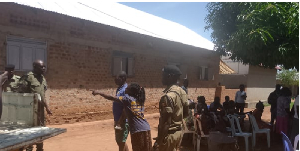Business News of Thursday, 28 August 2014
Source: GNA
Poverty still high in Ghana – Survey

About a quarter of Ghanaians are poor, the Ghana Living Standards Survey (GLSS) has revealed.
The GLSS, conducted by the Ghana Statistical Service (GSS), says a seven-year assessment has also revealed that the dynamics of poverty is still very much a rural phenomenon.
The report was based on the findings of sixth GLSS (GLSS6). It was carried out nationwide in 18,000 households in 1,200 enumeration areas, between October 2012 and October 2013 by the GSS.
Enumerating the key findings of the survey, Dr Osei Boeh-Ocansey, GSS’ Board Chairman, said for education, the school attendance rates recorded for boys and girls in the age group of 6-11 years were very high: At 93.3 per cent for boys and 92.6 per cent for girls.
Thus 6.7 per cent males are out of school, while 7.4 girls are out of school.
The findings also show that households spend on the average close to GH?500.00 annually on each household member attending school.
The participation rate in the labour force among persons 15 years and older, is 82 per cent for males and 77 per cent for females.
The data further reveals that about 26 per cent of children between five years and 17 years engage in child labour, whilst another 25 per cent are found in hazardous work.
According to the findings, more than 50 per cent of rural communities have Junior High Schools (JHS), with nearly half of them enjoying electricity from the national grid.
The data also reveals that about 80 per cent of rural communities have access to mobile phone networks, but less than a tenth have a post office and banking services.
Overall, about half of the rural communities visited by the GSS field staff, said that their living conditions have improved over the last 10 years.
Dr Boeh-Ocansey entreated the Management and staff of GSS to strive hard to produce and disseminate, on a continuous basis, a wide range of statistics that were relevant for stakeholders both within and outside Ghana.
He said Government and its Development Partners had provided a 40 million dollar support to the GSS and nine Ministries, Departments and Agencies (MDAs), within the National Statistical System to cater for the immediate statistical needs of the country.
The GLSS6 was one of the most important sources of data that monitored the welfare of the population .
It complements other surveys such as the Multiple Indicator Cluster Survey (MICS) and the Ghana Demographic and Health Survey (GDHS), to provide valuable statistical information aimed at understanding the living conditions of Ghanaians.
Some of the information gathered from the households were on their demographic characteristics, education, health, employment and time use, migration and tourism.
Information on housing conditions, household agriculture, access to financial services, asset ownership and households’ perception of governance, peace and security in the country were also captured.
Dr Boeh Ocansey said GLSS6 was a rich source of information, which should be utlilised for planning, informed decision-making, and monitoring and evaluation of development programmes.
Dr Philomena Nyarko, Government Statistician, said so far, Ghana had conducted six rounds of the Ghana Living Standards Survey, with the 2012/2013 edition being the latest.
She said the data had helped in determining how living conditions had changed over the years, both nationally and across the regions, and also across the various sub-groups.
She expressed her appreciation to the Development Partners, including UNICEF, UNDP, UNFPA, ILO, the World Bank, UK-DFID and a host of other individuals for their technical and financial assistance towards the exercise.










